The Art and Act of Story-telling: Evenmere Tales and Other Stories by James Stoddard
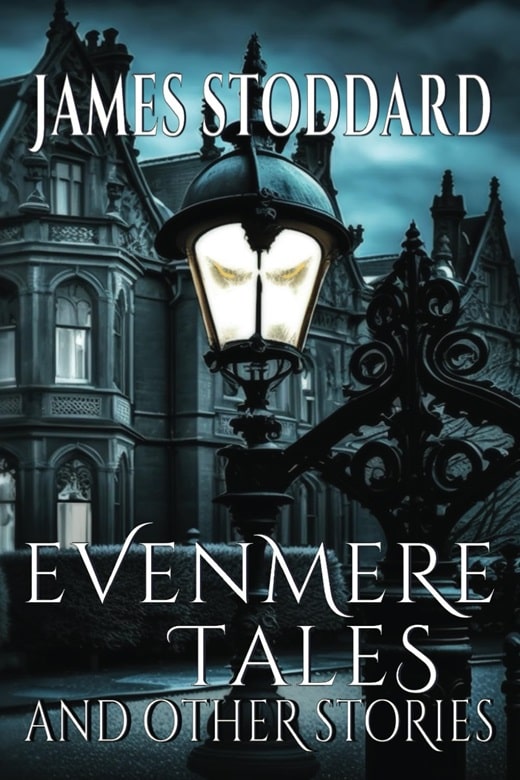 |
 |
Evenmere Tales and Other Stories (Ransom House, October 23, 2023)
James Stoddard, author of six novels including the delightful Evenmere trilogy (The High House, The False House, and Evenmere), has finally released a complete collection of his short stories. These stories at their best are first rate American fantasy. Even when they are not at their best, they are worth reading. Stoddard’s ambitions are extraordinary, and achieved often enough that he should be read, and read again.
Stoddard’s complete collection is slim — Evenmere Tales contains eleven tales, ranging from short story to novella. The oldest is “The Perfect Day,” a Bradburyesque tale published in 1985; the newest is the Evenmere novella “The Leechmont,” published here for the first time. Six appeared in The Magazine of Fantasy and Science Fiction between 2002 and 2011 — “The Star Watch” (Evenmere), “The Battle of York,” “The Star to Every Wandering Barque,” “The First Editions,” “Christmas at Hostage Canyon,” and “The Ifs of Time” (Evenmere). Three were published in various outlets between 2011 and 2020, although some were written earlier: “The Last Roadmaker,” “Day of the Shark,” and “Cage of Honor.” “The Coasts of Hope,” published in 2017 in a Hungarian magazine, is not included.
[Click the images for story-telling versions.]
Stoddard is not a prolific author. His good fortune is the reader’s misfortune; Stoddard has led a happy life, spent much of his time composing music and teaching sound engineering, and only fitfully devoted himself to writing fantasy. We cannot regret his felicity, although we can be wistful about the consequences.
The tales nicely illustrate Stoddard’s interests and ambitions. He loves the story structure of the hero proceeding via quest to triumph. “The Battle of York,” a fractured fairy-tale of American history, makes the hero George Washington; “Christmas at Hostage Canyon” makes the hero Santa Claus. These two stories add touches of wry humor to this self-aware embrace of the hero story. “The Battle of York” begins with this wonderful paragraph.
Young General Washington rode alone on his white stallion through the vast forest of Yoosemitee. His battle-axe, Valleyforge, hung glistening from the pommel of his saddle, the blood fresh-scrubbed from its edge. He has slain too many soldiers in the war against the Gauls and American Natives and was glad to be going home.
“Christmas at Hostage Canyon,” meanwhile, boasts an immortal two lines: “Eric had only one thought. There is a Santa Claus, and the elf is going to kill him.”
The hero story recurs in “Day of the Shark,” “The Last Roadmaker,” and “The Leechmont.” These last two show the downside of the hero-quest — no suspense, since the hero cannot lose. Indeed, Stoddard is fond enough of heroes that his villains often have little or no presence — they are obstacles to be vanquished rather than full characters. Sometimes the stories work without this element of suspense, but not always. “The Star to Every Wandering Barque” is remarkably compelling as a story of humans acquiring the temperament of angels, of heaven on earth, but devils do season a yarn.
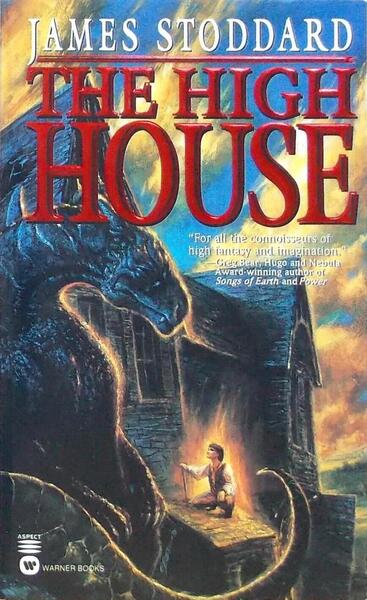 |
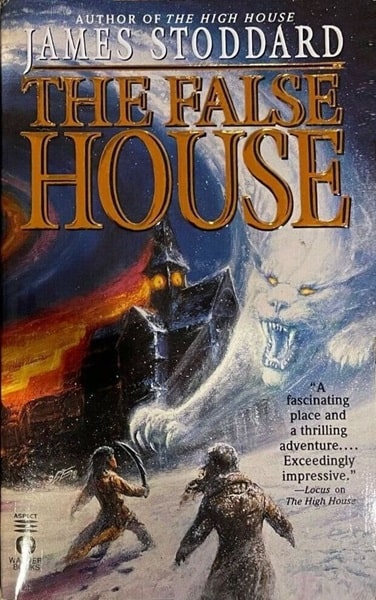 |
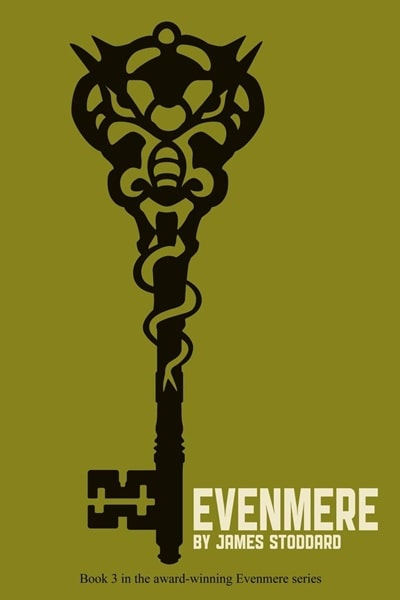 |
The Evermere Chronicles: The High House (Warner Aspect, December 1998),
The False House, (Warner Aspect, January 2000), and Evenmere
(Ransom Books, December 2015). Covers by Bob Eggleton, and uncredited
Stoddard also loves sheer narrative, story-telling. The wonderful Evenmere trilogy fused narrative, high fantasy, and William Morris wallpaper; many of these short stories also focus on the art and act of story-telling. “The Ifs of Time” tells of four storytellers slowing time itself by the act of telling stories, while “The Perfect Day” shows us a man who refuses to leave his story of a perfect childhood day.
“The Cage of Honor” gives us a protagonist who must escape a futuristic siren, who traps passers-by in stories rather than song. “The Last Roadmaker,” fan-fiction about the early twentieth century fantasy writer William Hope Hodgson, has Hodgson wandering in and out of three of his own novels. “The First Editions” gives us protagonists literally transformed into books, whose lives can be read, and whose eros is mutual reading.
We read together, a brief passage, and it was the most intimate experience I had ever known. Her soul lay before me, captured in lines rhythmic as poetry. More than the words, it was the order and the shape, the letters and punctuation, the way her thoughts rose and fell. It was an ecstasy, holy and wonderful. At the same time, I felt her partaking of me. She murmured in delight as she read me; I basked beneath her approval; out thoughts intertwined in the reading. Our covers touched lightly; I felt the passion of her soul.
What the stories make clear, even more than his novels, is Stoddard’s ambition. He wants to turn everything into a fantasy story, to show that the fantasy story structure can represent everything. “The Ifs of Time” contains four short-short science fiction stories within it; science fiction is only a story within fantasy. “The Battle of York” turns all of American history, as half-remembered after some future catastrophe, into more fantasy. “The Day of the Shark” makes the undersea realm fantastical, while “The Leechmont” does the same to the realm of subatomic physics.
I was a single spark, a speck, a bit that could be anywhere and many places at once, I bounced through the ether; I split and divided; I touched other sparks such as myself. I was two, then a hundred Rebeccas, but not Rebecca at al. I traveled through suns; time and space meant nothing to me. I was a sole bit of matter, a tiny flame in a vast universe.
“The Leechmont,” alas, is too self-consciously a return to the Evenmere universe, and brings back the protagonists of The High House and The False House at the cost of the dramatic and thematic unity of the novella. Leechmont’s heroine, Rebecca Rios the Night Clerk, plays a secondary role in her own story, when she should be the Percival whose efforts restore to health and power the Master of Evenmere, here a wounded Fisher King. And in a story concerned with subatomic physics, Stoddard misses a beat by failing to make Rios’ sojourn as Night Clerk subatomic, to cast her (for example) as a stolen electron residing awhile in the atom of Leechmont.
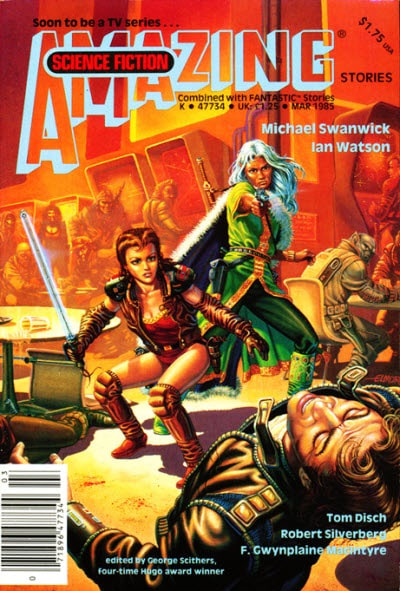 |
 |
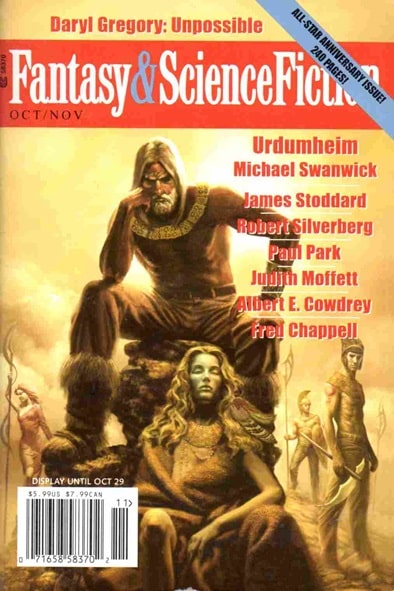 |
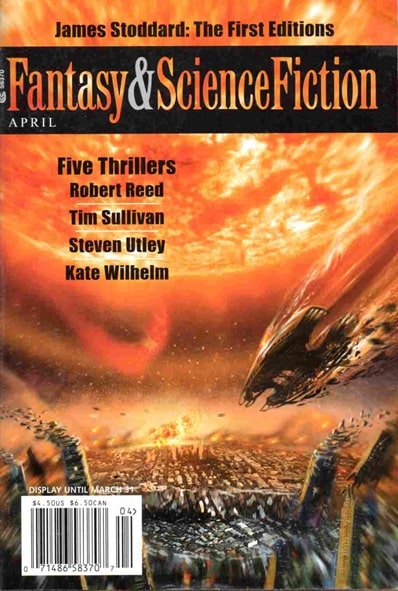 |
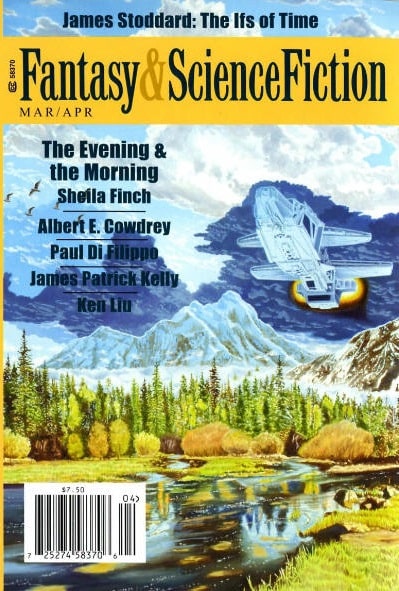 |
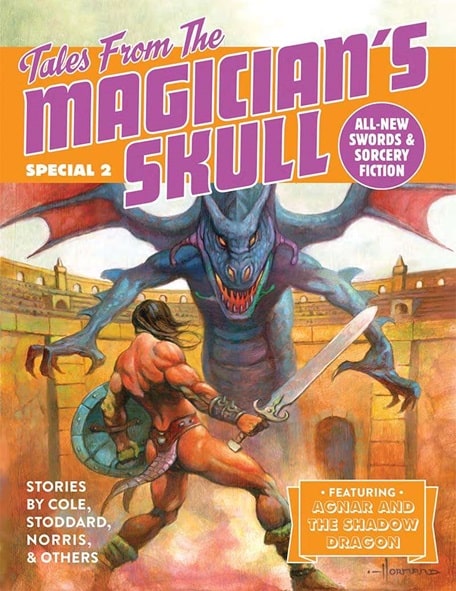 |
A few of the magazines where Stoddard’s stories originally appeared: Amazing Stories (March 1985),
The Magazine of Fantasy and Science Fiction (January 2002, October-November 2007,
April 2008, and March-April 2011), and Tales From the Magician’s Skull Special #2. Covers by
Larry Elmore, Kent Bash, Max Bertolini, Maurizio Manzieri, Kent Bash, and Didier Normand
Which is not to say that “The Leechmont” doesn’t illuminate. Stoddard casually links “décor” and “decorum” — and that explains the purpose of the William-Morris décor of Evenmere, a visualization of the necessity for telling a tale appropriately, by means of surface fictions. Truth needs a narrative; castle walls need wallpaper; behavior needs rules of deportment. Bones without a face are death, not truth. Without “The Leechmont,” I wouldn’t have known why Evenmere was so wainscoted or its heroes so courteous.
“The Battle of York” affects me most, since I fear that ever fewer Americans know a tenth as much of our nation’s past as is rendered by Stoddard’s loving rendition of half-remembered American history. The six stories published in The Magazine of Fantasy and Science Fiction have the highest quality, not least for veins of sadness that leaven the heroic triumphs. “The Day of the Shark” is a very accomplished entertainment. The other stories are generally good; the false notes are “The Last Roadmaker” and “The Leechmont,” which only work if the reader has read and enjoyed other works.
Ted Chiang provides the gold standard for low output and high quality in science fiction stories — eighteen short works, no novels, and nearly all nominated for or receiving major awards. That’s some batting average. Stoddard has written somewhat more — the Evenmere novels and others — and of his eleven stories, I would only rate six as excellent. But aside from Ted Chiang, I cannot think of another living writer in science fiction and fantasy, or indeed in any genre, who has written so high a proportion of excellent stories as James Stoddard.
Evermore and Other Tales was published by Ransom House on October 23, 2023. It is 296 pages, priced at $26.99 in hardcover, $15.99 in trade paperback, and $4.99 in digital formats.
Here’s the complete Table of Contents.
“The Ifs of Time” (The Magazine of Fantasy & Science Fiction, March-April 2011)
“The Battle of York” (The Magazine of Fantasy & Science Fiction, July 2004)
“The Perfect Day” (Amazing Stories, March 1985)
“Cage of Honor” (Tales from the Magician’s Skull #4, 2020)
“A Star to Every Wandering Barque” (The Magazine of Fantasy & Science Fiction, October-November 2007)
“The Leechmont” (original to this volume)
“Christmas at Hostage Canyon” (The Magazine of Fantasy & Science Fiction, January-February 2011)
“The First Editions” (The Magazine of Fantasy & Science Fiction, April 2008)
“Day of the Shark” (Tales from the Magician’s Skull, No. 2 – 2018)
“The Last Roadmaker” (The Night Land website, 2011)
“The Star Watch” (The Magazine of Fantasy & Science Fiction, January 2002)
David Randall is the author of the In the Shadow of the Bear young adult fantasy series (Simon & Schuster), including Clovermead, Chandlefort, Sorel, and Ursus.
This does, in fact, seem relevant to my interests.
I remember “The Battle of York” and “The First Editions” with considerable affection.